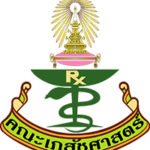Using Medication Correctly for a Pain-Free Life

Understanding Pain Management with Chula Pharmacy: Using Medication Correctly for a Pain-Free Life
Pain is a common issue that can significantly disrupt daily life. It affects people of all ages, including children, adults, and the elderly. Pain can arise from various causes, such as overuse of muscles, severe injuries, or underlying medical conditions like neurological diseases and diabetes.
Certain types of pain, like migraines and menstrual cramps, may come and go, but chronic pain is defined as lasting longer than six months. Common causes of chronic pain include arthritis, osteoarthritis, degenerative disc disease, office syndrome, chronic injuries, and cancer.
One of the most widely used methods for pain relief is medication. Paracetamol is commonly used for moderate pain relief, but it must be used with caution. The maximum recommended dose is 8 tablets (4 grams) per day, and it should not be used for more than 5 consecutive days due to the risk of liver damage. The liver metabolizes paracetamol into non-toxic substances, and exceeding the recommended dose can overwhelm this process.
People with existing liver conditions or those who regularly consume alcohol are at higher risk of liver damage from paracetamol. For severe pain or when paracetamol is ineffective, non-steroidal anti-inflammatory drugs (NSAIDs) like ibuprofen, naproxen, and diclofenac may be used. While NSAIDs can be more effective than paracetamol, they come with additional risks such as drug allergies, stomach irritation, and kidney and liver toxicity. Chronic pain requiring continuous medication may not be suitable for NSAID use without careful supervision by a doctor or pharmacist, especially for those with chronic diseases and the elderly.
A common issue with self-medication is the overlapping use of medications. For example, taking paracetamol along with a combination of paracetamol and muscle relaxants can lead to excessive doses. Similarly, using multiple NSAIDs simultaneously does not enhance pain relief and increases the risk of adverse reactions.
Many elderly patients have ended up in emergency rooms with gastrointestinal bleeding or acute renal failure after taking painkillers. Investigations often reveal that these pills contained multiple NSAIDs and a steroid, increasing the risk of serious complications.
In summary, while paracetamol and NSAIDs are effective pain relievers, they must be used with caution. For chronic or severe pain, medication should be managed under the supervision of a healthcare professional to ensure both effectiveness and safety.
Assoc. Prof. Dr. Nattada Areepiam and Assoc. Prof. Dr. Bodin Tiwasuwan
Faculty of Pharmacy Chulalongkorn University
เราใช้คุกกี้เพื่อพัฒนาประสบการณ์การใช้งานเว็บไซต์ของคุณให้ดียิ่งขึ้น คุณสามารถจัดการความเป็นส่วนตัวของคุณได้เองโดยคลิกที่ ตั้งค่า
